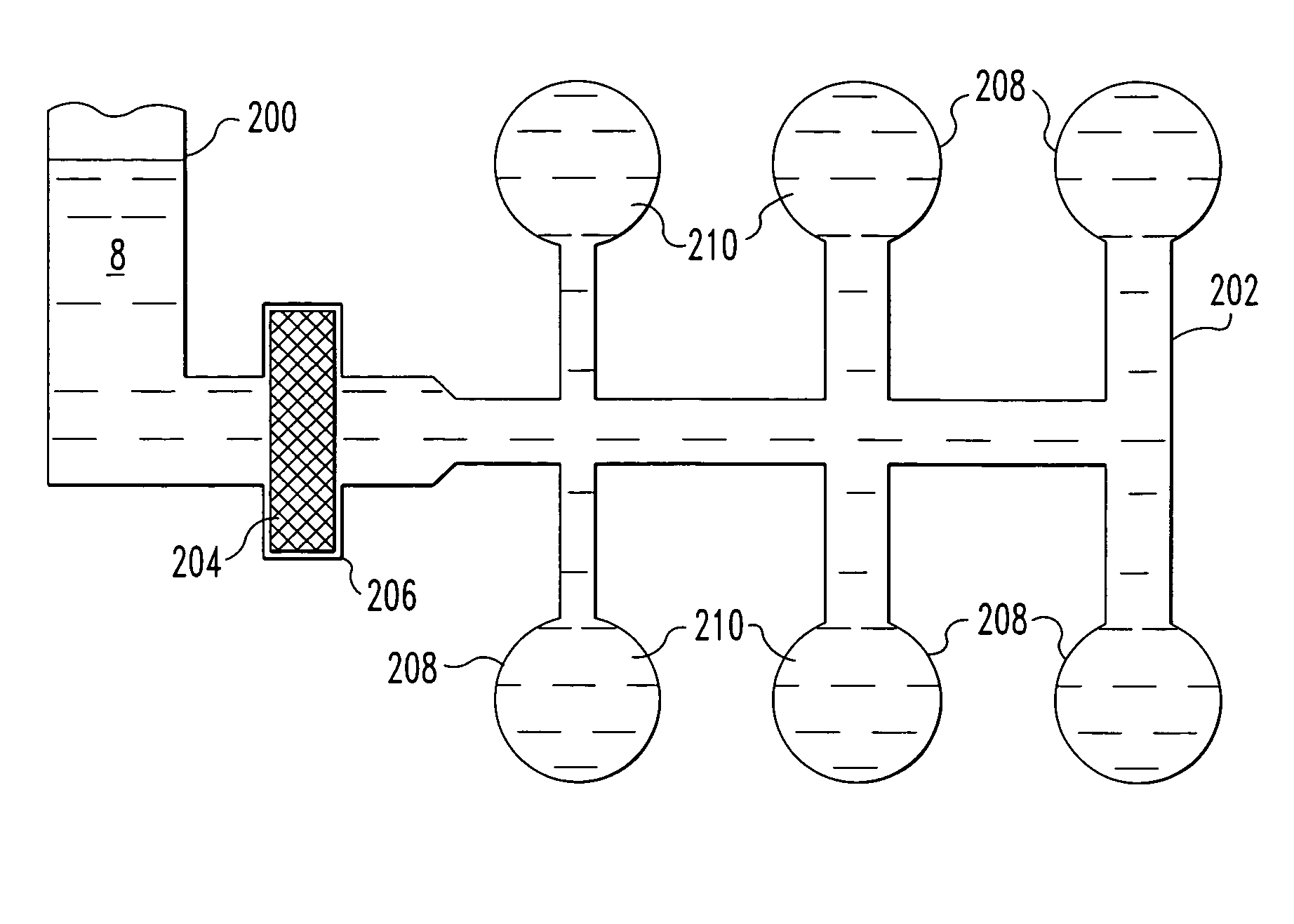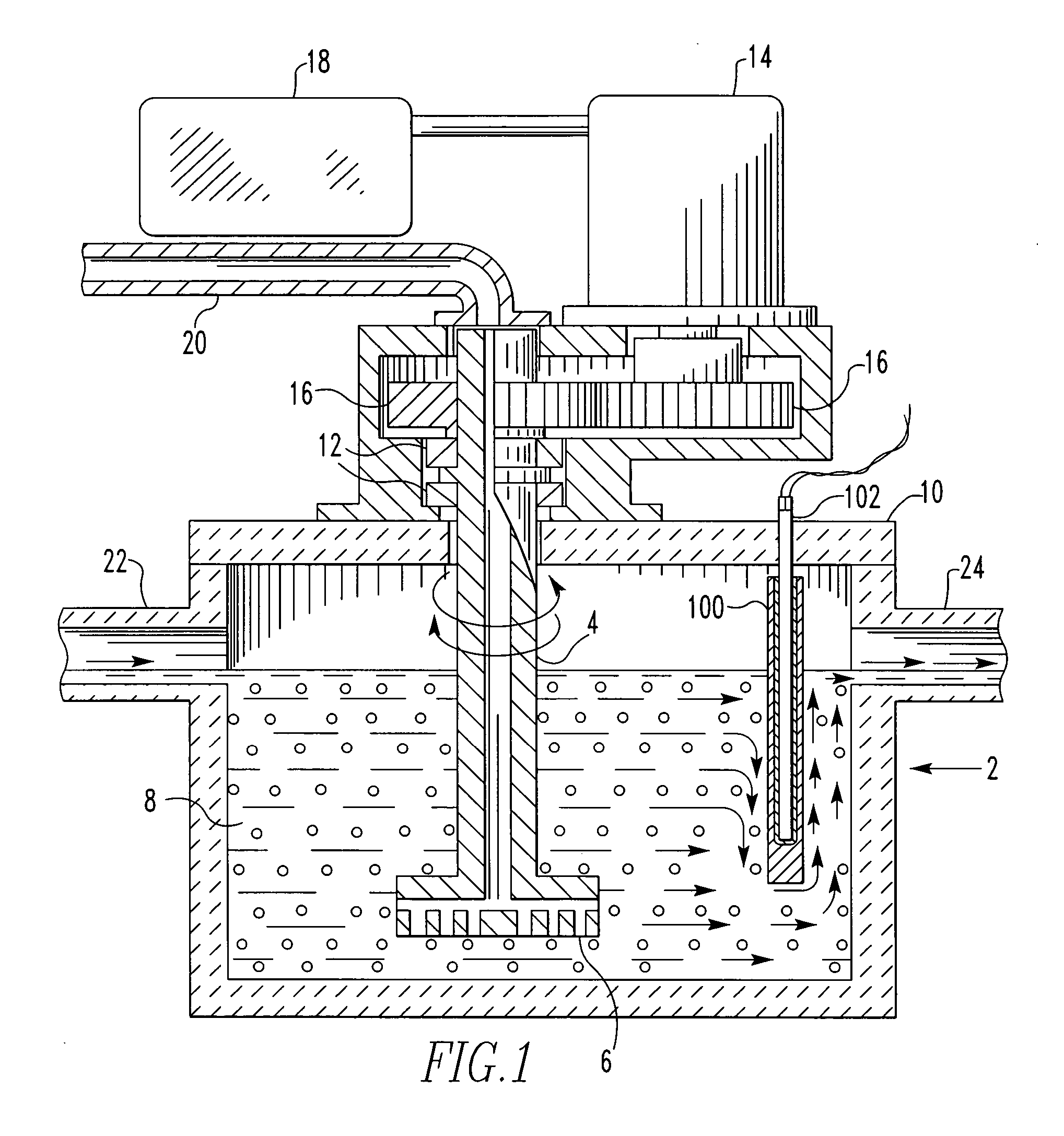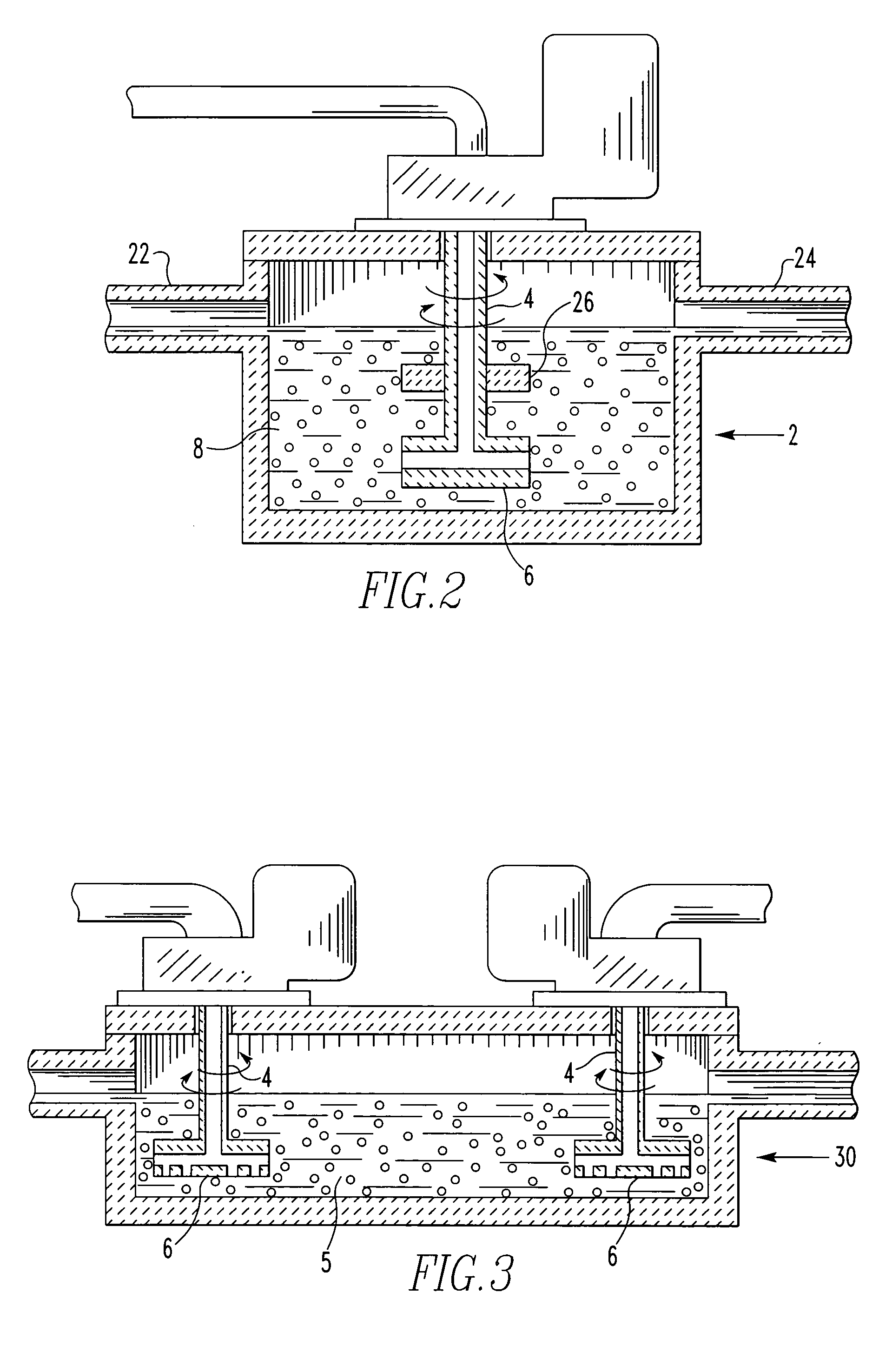Molten aluminum filtration
a technology of aluminum filtration and aluminum slag, which is applied in the field of molten metal, can solve the problems of inconvenient method, high undesirable molten salt, and undesirable halides
- Summary
- Abstract
- Description
- Claims
- Application Information
AI Technical Summary
Benefits of technology
Problems solved by technology
Method used
Image
Examples
example
[0100] For purposes of demonstrating the effectiveness of reverse rotation for purposes of fluxing molten aluminum on a continuous basis, a chamber containing molten aluminum was used and an impeller having an 8 inch diameter was immersed in the molten aluminum to a depth of 25 inches. The chamber had a circular cross-section. The impeller was rotated at a speed of 425 RPM and the direction of rotation was reversed every 24 seconds. Molten aluminum was flowed through the chamber at a rate of 61,000 lbs / hour and the metal residence time in the chamber was 97 seconds. For purposes of hydrogen removal, argon gas was introduced through the impeller at a rate of 150 SCF / hour. Hydrogen concentration is given in cm.sup.3H2 (STP) / 100 g Al and determined by Ransley solid extraction method. Aluminum alloys AA6111 and AA3004 were tested. The results are as follows:
TABLE IAlloyUpstream H2Downstream H2% SampleConcentrationConcentrationReduction6111-10.230.0961%6111-20.240.0963%6111-30.260.0965...
PUM
| Property | Measurement | Unit |
|---|---|---|
| temperatures | aaaaa | aaaaa |
| median particle size | aaaaa | aaaaa |
| particle sizes | aaaaa | aaaaa |
Abstract
Description
Claims
Application Information
 Login to View More
Login to View More - R&D
- Intellectual Property
- Life Sciences
- Materials
- Tech Scout
- Unparalleled Data Quality
- Higher Quality Content
- 60% Fewer Hallucinations
Browse by: Latest US Patents, China's latest patents, Technical Efficacy Thesaurus, Application Domain, Technology Topic, Popular Technical Reports.
© 2025 PatSnap. All rights reserved.Legal|Privacy policy|Modern Slavery Act Transparency Statement|Sitemap|About US| Contact US: help@patsnap.com



